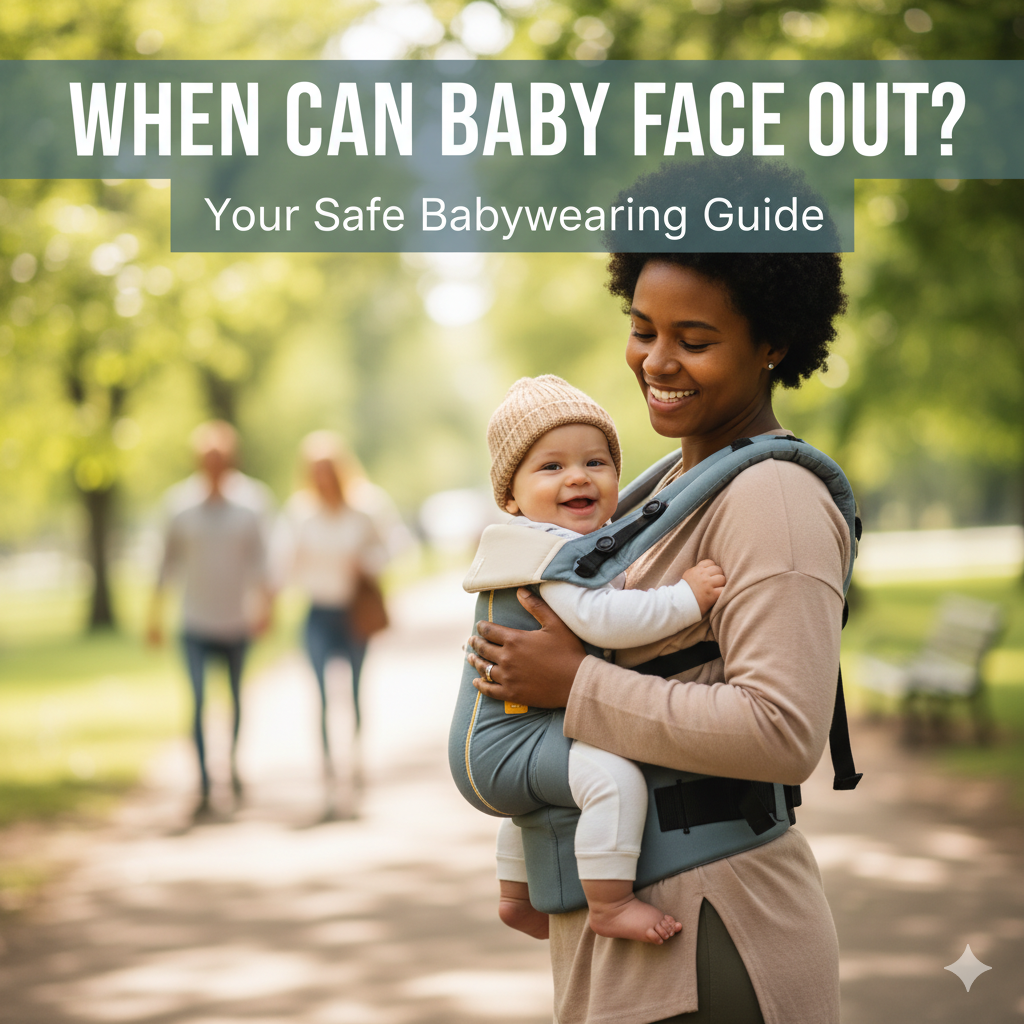When Can Baby Face Out in Carrier? The Essential Guide to Safe Outward-Facing Babywearing
As a parent, you're excited for your baby to explore the wonderful world alongside you. When your little one gets increasingly curious and starts twisting their neck to look around, you might ask yourself: "Is it time to face them out?"
This is a great question! While the outward-facing carry mode offers a brand new perspective, timing and safety are absolutely critical.
Key Milestones: The Two Golden Rules for Safe Outward Carrying
When can you adjust your baby to the outward-facing position? The answer isn't a fixed date, but rather depends on two vital physical development milestones:
1. Strong Head and Neck Control (The Must-Have)
This is the primary requirement for outward-facing carrying. Your baby must be able to independently and steadily support their head and neck, even when you are walking or moving quickly.
-
Why it's important: Outward-facing mode doesn't offer the same built-in head and neck support as the inward-facing mode. If your baby lacks sufficient head strength, their head might "flop" during movement, posing a risk of injury.
-
Typical Timeline: Most babies reach this milestone between 4 to 6 months of age.
2. Adequate Size and Height (For Comfort and Airflow)
Your baby must be tall enough so that when they are facing out, their chin is comfortably and safely positioned above the top edge of the carrier panel.
-
Why it's important: If your baby is too small, the carrier fabric could obstruct their nose and mouth, affecting breathing. Additionally, the carrier fabric should extend down to the hollow of their knees to maintain a healthy leg position.
Best Recommended Age: 5–6 Months

Based on expert consensus, most baby care specialists and carrier manufacturers recommend:
Only consider switching to the outward-facing carry when your baby is at least 5–6 months old and demonstrates full and sustained head and neck control.
Remember, this age is just a guide; every baby develops at their own pace. Always prioritize your baby's individual development and comfort.
Outward-Facing Carry: Ensuring the Healthy 'M' Position
Whether your baby is facing in or out, maintaining healthy hip development is crucial.
When carrying facing out, you must ensure your baby's legs and hips are still in the 'M' shape position (also known as the frog-leg position):
-
Their knees should be slightly higher than their bottom.
-
The legs are naturally spread open and supported by the carrier from knee-to-knee (or at least to the hollow of the knee).
If your baby's legs dangle straight down, or the carrier panel is too narrow to provide proper knee support, please do not use the outward-facing mode. Incorrect positioning can increase the risk of hip dysplasia. Always check your carrier's instruction manual to confirm it supports the M-position when facing out.
3 Essential Safety and Comfort Tips
As you get ready for your baby to explore the world facing out, keep these three points in mind for a pleasant and safe experience:
1. Watch for Overstimulation
The outward-facing world can be exciting, but also overwhelming and noisy for a baby.
-
Suggestion: Limit the initial outward-facing time to 15 to 20 minutes.
-
Observation: If your baby becomes fussy, turns their face toward you, closes their eyes, or becomes unusually quiet, these are signs they need a break or should be switched back to facing inward.
2. Use Only When Awake and Alert
If your baby falls asleep in the carrier, you should immediately adjust them back to facing inward or take them out. Inward-facing carrying provides better head support for a sleeping baby and ensures a clear airway.
3. Choose the Right Environment
Outward-facing carrying is best suited for calm, familiar environments, such as a walk in the park or a visit to an uncrowded store. In busy, noisy, or highly stimulating environments (like a crowded market or a concert), it's best to keep them facing inward so they can seek comfort and security against your body.
Summary: You Decide When to Switch
Outward-facing carrying is an exciting stage in your baby's growth! When you decide to make the switch, follow these principles:
-
Check Physical Readiness: Ensure your baby has full head and neck control (typically 5-6 months).
-
Check the Carrier: Confirm the carrier supports the healthy 'M' position.
-
Check Your Baby: Watch their cues and limit the initial time spent facing out.
If you have any questions about your carrier usage or your baby's readiness, always feel free to consult a professional babywearing educator or your pediatrician.





